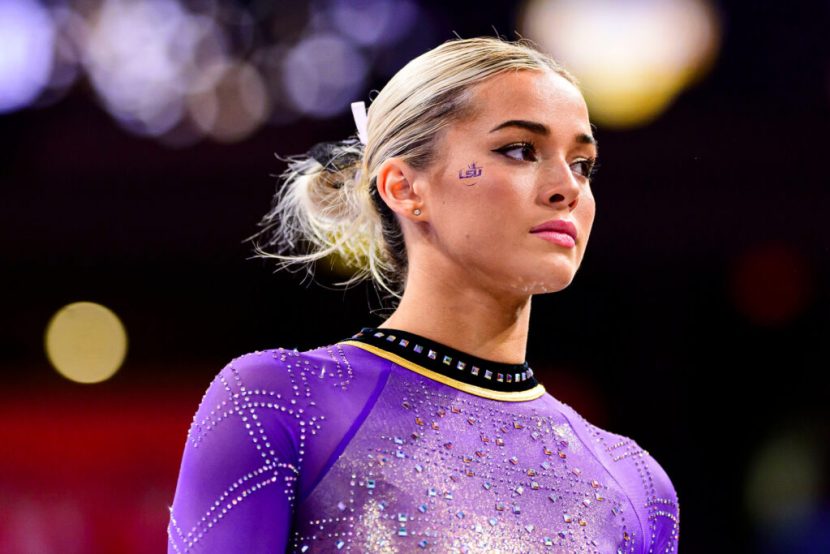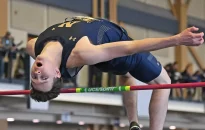While Utah and Georgia had a monopoly on team championships in the early and mid-’80s, individual stars from other schools still emerged during the era. While Utah had Marsden, Georgia had a legendary head coach of its own: Suzanne Yoculan. Yoculan took the reins of the program in 1983 and immediately brought the program to […]

While Utah and Georgia had a monopoly on team championships in the early and mid-’80s, individual stars from other schools still emerged during the era.
While Utah had Marsden, Georgia had a legendary head coach of its own: Suzanne Yoculan. Yoculan took the reins of the program in 1983 and immediately brought the program to new heights. In 1986, the Bulldogs won their first SEC Championship title, along with Yoculan’s first of eight SEC Women’s Gymnastics Coach of the Year titles. Yoculan would lead the Bulldogs all the way until 2009, when she retired from her head coaching job as one of the most decorated coaches ever.
In her freshman year, Stednitz would win the inaugural NCAA Gymnastics all-around title. McCunniff would win in 1983, and after marrying Utah head coach Greg Marsden, would win her second all-around title in 1984. From 1982 to 1985, Utah collected nine individual titles in addition to its team championships. Over this span, Elaine Alfano became the first gymnast to win three individual event titles, taking home the gold medal on vault in 1982, 1983, and 1985.
The Titans competed in the Western Athletic Conference, alongside a litany of programs now spread between the Mountain West and Mountain Pacific Sports Federation conferences. The program lasted until 2011, when it was cut in part because CSUF’s main conference – the Big West – did not sponsor gymnastics, leaving the team as the odd man out among other teams at the university.
Utah Domination

The 1987 Bulldogs squad was led by a couple of familiar faces: Corrinne Wright and Lucy Wener. Wener was an alternate for the 1984 U.S. Olympic team. One year prior to Georgia’s first team title, Wener became the first Georgia gymnast to win an individual national title, snagging her first of three bars titles in 1986.
Carrying over its success in the AIAW era, Utah dominated the early era of NCAA gymnastics. The Utes won the first five NCAA gymnastics championships, often by convincing margins.
Around the same time, Kim Hamilton became the first African-American gymnast to earn a full scholarship to UCLA. The first member of her family to go to college, Hamilton also became UCLA’s first NCAA gymnastics champion, winning her first of three consecutive floor titles in 1987 and becoming the first Black gymnast to win a NCAA title. While Hamilton was UCLA’s first champion, she was far from the last, acting as a catalyst for a prestigious program that would emerge through the 1990s.
In addition to their 1987 team title, Wright, or as contemporary gymnastics fans may know her, Corrinne Tarver, won a bronze medal in the all-around, along with a silver medal on floor. Wright, herself a two-time U.S. national team member, was the first Black gymnast to compete for the Bulldogs, along with the first college gymnast at any program to compete a double layout on floor – still considered one of the most difficult skills on the apparatus. Not to get ahead of ourselves, but remember Wright, as she’ll come back with a vengeance in the next installment of the series. Wright would go on to be named the inaugural head coach of the Fisk University gymnastics program in 2022.
A New Champion Emerges

Beam and floor also began to look much more like what we are used to today, with an increased variety of acrobatic and dance skills on both apparatuses compared to prior decades.
Greg Marsden, now a decade into his college coaching career, was reaching new heights alongside his program. From 1982 to 1988, Utah never placed below second at conference championships, regionals, or nationals. In 1987, Marsden started his foray into the world of elite gymnastics, in addition to college, being named the coach of the U.S. women’s national team.
On vault, common skills performed included a Tsukahara layout and front handspring front tuck. Some particularly daring gymnasts, such as Florida standout turned NBC commentator Elfi Schlegel, upped the difficulty by competing twisting vaults like a tucked Tsukahara full – a vault still occasionally seen at the Division III level today.
In 1987, elite standout and 1983 U.S. world team member (and 1984 Olympic alternate alongside Wener) Kelly Garrison won her first all-around title. She would go on to make the Seoul 1988 team, making her the first NCAA champion to also compete in the Olympics.
Elsewhere in the NCAA
1987 also saw Washington’s Yumi Mordre become the first gymnast to win two event titles in the same championship, taking home the vault and beam titles.

In even the earliest years of college gymnastics, the sport underwent massive amounts of change in a relatively short period. Gone were the leaps and jumps, salto-less vaults, and belly-beats that defined the first major era of college gymnastics. In their place came the advent of the skills we continue to see as the foundation of college gymnastics to this day.
As we go through the history of college gymnastics, there are bound to be a few things that failed to stand the test of time. One of these is the team that finished second at the inaugural NCAA gymnastics championships: Cal State Fullerton.
During the first few years of the NCAA era, Cal State Fullerton lived up to its team mascot – they were the Titans. The team, led by CSUF Hall of Fame inductee Lynn Rogers from 1976 to 1999, competed in five of the first six NCAA gymnastics championships, never finishing below fifth.
In Memoriam

Toward the end of the decade, another familiar face joined the championship ranks: the Georgia Bulldogs. In 1987, the Bulldogs – who would come to be known as the GymDogs – became the first non-Utah team to win the NCAA gymnastics championships.
By the mid-’80s, the bars had moved farther apart for the first time, allowing gymnasts to perform a whole new selection of skills. Single bar releases such as the Tkatchev came into favor, along with high-flying dismounts like double tucks and toe-on front tuck halves.
The cast of stars at Utah carried over from the AIAW era as well. In 1982, the Utes returned five All-Americans, including Megan McCunniff, along with a talented freshman class headlined by U.S. National Team member Sue Stednitz.














